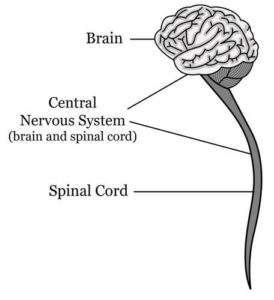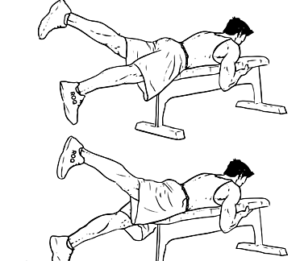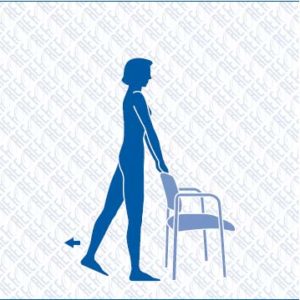Our third Q&A comes from Hermant, a runner in his mid 40s, trying to achieve a sub-4 marathon. His question goes:
What kind of training I should be doing to avoid cramps during a race and also achieve a sub 4 goal in marathon
Hermant ran 4 marathons and numerous Half Marathons in the last 5 years. In 3 of his marathons he experienced cramp in his hamstring after 30km. He is training for Tokyo Marathon 2017 as his A-race. He now runs about 70km per week.
The Cramp issue
The first thing we tend to associate with a cramp is often dehydration. It is true that dehydration, leading to electrolytes loss through sweat can cause cramping. However this is in reality a rare cause myth. A study had two groups of cyclist ride in a very hot environment at a very high intensity. After the ride, they took blood sample of everyone and tried to correlate the level of dehydration with the athletes who cramped. The results showed that there is no significant correlation between the two variables.
During physical activity, the skeletal muscles do two things: contraction and relaxation. Both mechanism needs energy, ATP (adenosine triphosphate). Cramping happens when the relaxation part does not happen, your muscle stays in a contracted state. So why does not the muscle receive energy to relax? something is preventing it either from receiving it, or just the necessary energy is not sent. Recent research suggest that cramping happens because a neurological stimulus is missing. Something wrong is happening either at the spot (peripheral origin) or in the spinal cord (central origin). Dehydration for example causing a deficit in essential minerals necessary for muscle contraction and relaxation on the spot would be a culprit. That is why it was long believed that dehydration was THE cause of cramping, and also because it allowed sports drink company to do massive marketing campaign and make money out of it (“drink every 15min” sounds familiar? ). So the possibility left is from the central nervous system (CNS) that does not voluntarily send any signal (and thus energy) for the muscle to relax, you are then left with a muscle that is constantly contracted and oftentimes excruciating pain.

The main reason accepted by scientists for why our spinal cord stops signaling is for a protective and survival purpose. Our brain does not recognize the stress we put the muscle under as safe and in order to protect it from breaking down, it seizes the muscle up by not signaling ATP to relax the muscle and thus forcing us to stop. It is a stress that the brain haven’t experienced and is basically freaked out that something bad will happen. The brain does all sorts of calculation based on internal feedback (body temperature, muscle damage etc) and makes a decision subconsciously if we keep doing what we are currently doing.
However there is a buffer between the point where the muscle tissue will actually break down and when the brain takes action. This buffer will differ from person to person, and training will reduce this buffer. Experiencing the type of stress in racing during your training will tell your brain that it is ok to let go and with time by repeating the process this buffer will decrease and your brain will get you closer to the real line before it makes you cramp.
If you are cramping during a marathon (typically after 30km) it means that the current stress you are in while racing is too high compared the type of stress you experienced during training. If you want to break 4 hours (same thing applies for any sub-X) you have to run at 5:40 pace average for 42.2km. If during your training you do for example most of your runs at say 6:30 pace and doing some intervals here and there at 4:30 pace, you are missing something. Running 30km at 6:30 pace or running 6 x 1000m at 4:30 pace is very different from running 42km at 5:40 pace. This could be one reason. Another reason could be just that your fitness level is not high enough to run a 4-hour marathon. For example if you go to any online race predictor, you will see that you need to be capable of running a Half under 1:55 (at least !) if that is not the case, the chances to run a sub-4 are slim (if not zero). Since you are cramping between 30k to 33km, what I would try to do is first to include faster finish long run. I would for example start easy and run at 5:30 pace from 28k to 33k. This is just one suggestion and the possibilities are endless. It all comes down to specificity, one has to mimic as close as possible the condition of the race: duration, speed, distance.
The Hamstring issue
Hamstring injuries are very common in runners, oftentimes it is an overuse injury and it’s not a coincidence. When running, during the push off phase, when we extend our hip/leg and kicking back, the main muscle responsible, called Primary Mover, is the Gluteus Maximus (aka the butt !). Unfortunately, because we spend most of the day sitting, we forget how to use it properly. Either our gluteus are weak or either we don’t know how to use them and to fire them properly. In both cases we rely heavily on the hamstring to do the work. In that scenario the hamstrings are taking the load instead of the gluteus, we called that a Synergic Dominance: the wrong muscle is used instead of the right one leading to inefficient biomechanics.
It’s like trying to whisk egg whites into peaks with a fork instead of a proper whisk. The fork can do the job, but your arm will pay the price for it. Same thing happens during a marathon. If you run with big biomechanics inefficiencies, using heavily your hamstring in place of the gluteus, and if on top of that your gluteus are weak and get tired, your hamstrings will take all the stress previously shared with its friend the gluteus maximus. We are then placing a physical demand on a muscle that is not supposed to do what we are asking it to do. In other terms we are treating the hamstrings as a primary mover instead of a secondary mover. Gluteus and hamstring work as a team, the glutes doing the main job and the hamstring helping (not the other way around), together they form a real synergy (as opposed to a synergic dominance). This explains why overuse injuries and cramps are frequent on the hamstrings: we are over-using it.
In this case there is no shortcut remedy as everything involving changing biomechanics involves resetting motor learning which could take a long time. A safe way would be to go step by step. First strengthening the gluteus. The flutter kicks is a classic exercise and one option among many:

Then (re)learning how to use them while running. Some people have very strong gluteus but still don’t use them when running. I would start with strides, then on easy runs, focus on extending my legs and opening more my strides from behind. Try a hip extension test: stand up face against the wall or a chair (~10cm), keep the body parallel to the wall. Lock your left knee, extend your leg behind as far as you can while maintaining a straight leg.

You should feel your left butt getting tight, contracting, a squeezing sensation. If not then it means you are using your hamstring too much and that’s the wrong way to extend your hip (at least when running). Now try remembering this “butt squeezing” feeling and when you do strides, sprints and on your easy run try to reproduce this feeling, minimizing hamstring work and firing the gluteus instead.
To put it more simply, it comes down to a/ the specificity principle. Adapting your training so that as your get closer to your race the more your long run will mimic the mental and physical demand of your main event. And b/, working slowly to improve running form, a long but rewarding process.
If you have a question you’d like us to respond in our Q&A section, please sign up to our newsletter:

Great info! Thanks coach! I’ve never cramped during a race but only once after the race at Chicago. Does that mean I was on the verge??
Hey Padawan,
Yes, you were definitely on the verge ! But who cares as long as you cramp AFTER the finish line right 😉
Very good information! Thanks.
Happy to help as awlays Bob